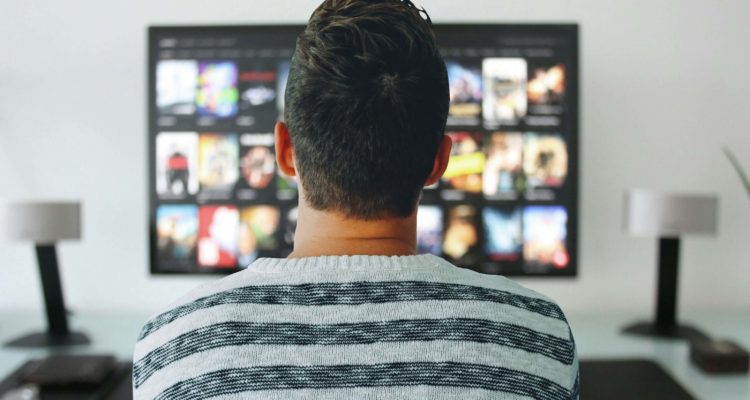В век научно-технического прогресса вряд ли кто-то захочет носить с собой тяжелые и объемные бумажные книги. Кроме того, их нужно купить, а после прочтения где-то хранить. Отличной альтернативой бумажным книгам является электронная книга, которую еще называют букридером. Она позволяет освободить больше места в доме или квартире, и очень кстати любителям читать в любом месте и в любое время. Как же определиться с подходящей моделью? Можно выбрать хорошую электронную книгу в QwertyShop, интернет-магазине электронной техники, но стоит предварительно ознакомиться с основными параметрами, которые нужно знать и учитывать при покупке.
Параметры дисплея
Выбор экрана — самый основной критерий в читалке, ведь именно он влияет на комфорт при чтении.
Тип
Главную составляющую электронной книги можно назвать дисплей, который бывает двух видов: электронная бумага и LCD. Каждый из них имеет свои принципы работы и по-разному влияет на глаза человека.
Актуальный и оптимальный вариант — E-Link и его аналоги (Flex, SiPix). Не вдаваясь в научные термины и подробности, можно сказать, что этот дисплей имитирует обычную печать — своего рода электронная бумага. Технология основана на явлении электрофореза — в случае с электронными книгами, это перемещение в микрокапсуле с прозрачной жидкостью отрицательно и положительно заряженных черных и белых пигментов соответственно. Электронные чернила способны отображать текст и изображения.
Данный тип имеет несколько подтипов: Vizplex, Pearl, Carta. Различия между ними незначительные: в контрасте или цвете.
Vizplex характеризуется невысокой контрастностью и разрешением 600 на 800 точек. Дисплеи такого типа в основном имеют диагональ 6 дюймов. Такой вариант считается устаревшим и может встречаться в недорогих или старых моделях.
Pearl имеет контрастность почти в 2 раза больше, чем Vizplex. Данный вариант часто встречается в современных букридерах.
Carta — помимо 16 градаций серого, имеет более четырех тысяч оттенков, что позволяет отображать цвета на дисплее читалок. Кроме того, в этом типе контрастность выше, увеличен коэффициент отражения, а обновление страниц происходит менее заметно и более комфортно для глаз.
Есть и другие технологии, являющиеся альтернативными E-Link, но отличающиеся определенными характеристиками.
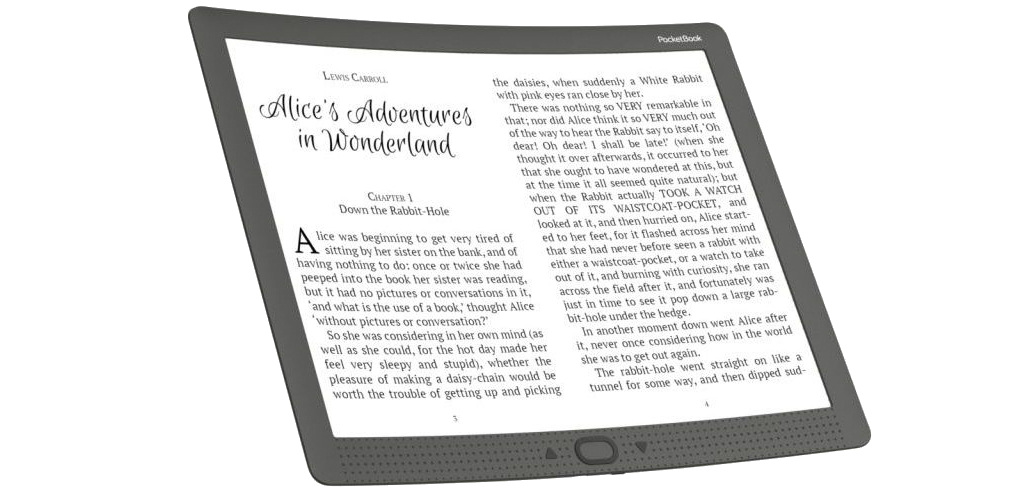 Тип Flex (Mobius) отличается от того же Vizplex и Pearl большей устойчивостью к механическим воздействиям. Если в подложках последних двух вариантов имеется тонкий слой стекла, то во Flex применен пластик, который можно сгибать.
Тип Flex (Mobius) отличается от того же Vizplex и Pearl большей устойчивостью к механическим воздействиям. Если в подложках последних двух вариантов имеется тонкий слой стекла, то во Flex применен пластик, который можно сгибать.
Тип SiPix имеет отличие от E-Link в том, что во время чтения можно заметить сеточку микрокапсул на экране; пигменты белого цвета обладают серым оттенком, а черные — выглядят более насыщенно. В современных девайсах это поколение дисплеев встречается редко.
Текст в электронных книгах с E-Link и его альтернативными вариантами легко читается при ярком освещении и не оказывает негативного влияния на зрение. Устройства с дисплеями данных технологий очень экономны в плане энергопотребления.
Букридеры с дисплеем типа LCD стоят на порядок дешевле, но и по характеристикам во многом уступают E-Link. Во время чтения при ярком солнце возникает эффект блика, что создает дискомфорт. А в темный период жидкокристаллические дисплеи продуцируют много света, из-за чего «режут» глаза. Если сравнивать LCD с E-Link, то первые разряжаются гораздо быстрее.
Разрешение
Разрешение — то, от чего зависит качество текста и возможность выводить его в достаточном масштабе. Оптимальное значение данного параметра для электронных книг — 480 на 800 точек. Этого хватит для удобного и комфортного чтения. Встречаются и варианты с разрешением 320 на 460, причем их стоимость на порядок ниже. Но лучше выбрать дисплей 800 на 600 точек, это один из стандартных разрешений компьютера. Естественно, чем больше разрешение, тем лучше отображается текст, поэтому, если финансовые возможности позволяют, то 1448 на 1072 точек будет идеальным вариантом.
Размеры экрана
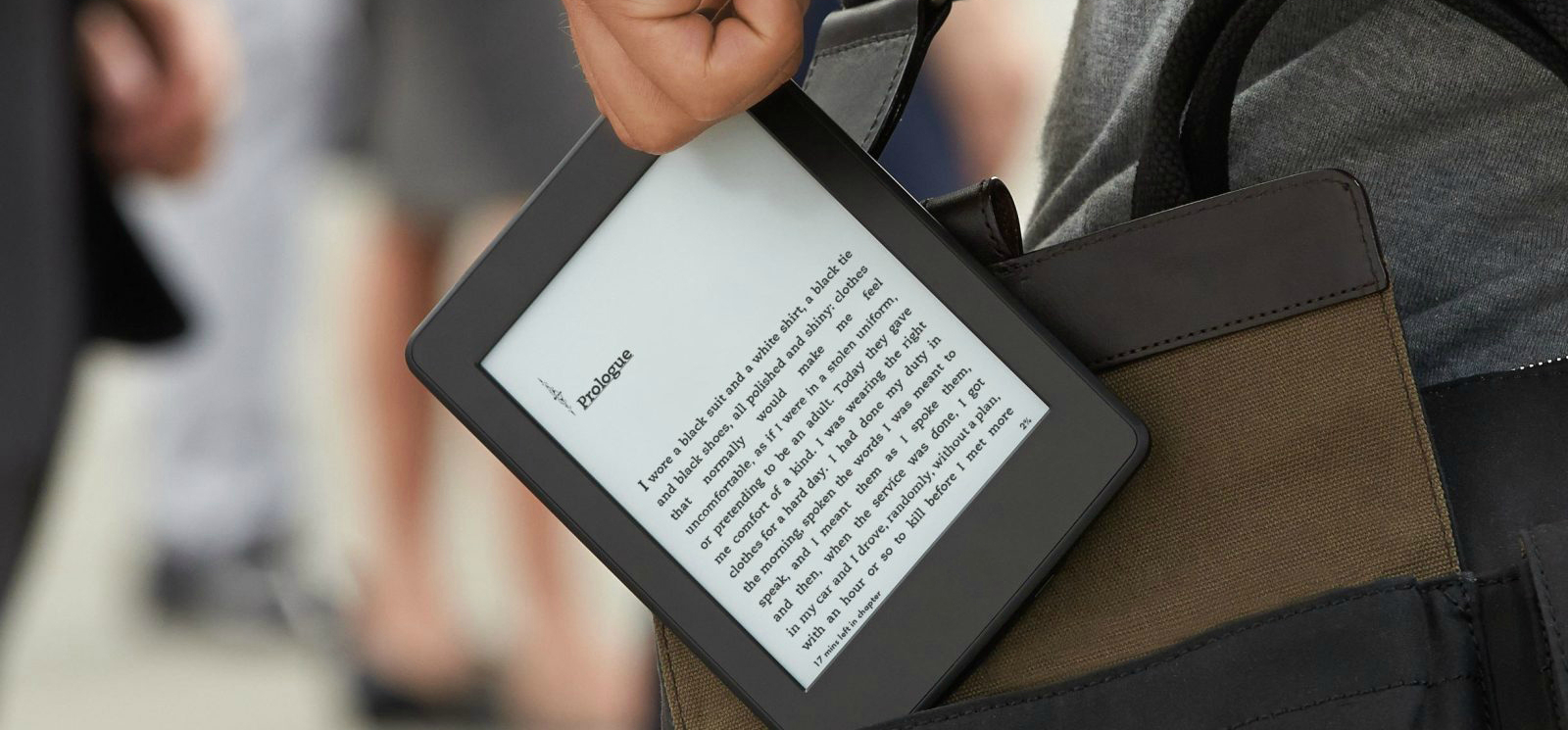 Конечно, основной критерий при выборе размера экрана — это пожелание покупателя. Кому-то удобно брать с собой везде маленький букридер, а у кого-то с ним устают глаза.
Конечно, основной критерий при выборе размера экрана — это пожелание покупателя. Кому-то удобно брать с собой везде маленький букридер, а у кого-то с ним устают глаза.
Оптимальный размер экрана читалки — 6 и 7 дюймов. Если для человека крайне важно небольшой размер устройства, тогда лучше остановить свой выбор на 5-дюймовом букридере.
Если же удобнее читать с большого дисплея, тогда можно смело выбирать 8-дюймовую электронную книгу.
Поддерживаемые форматы устройства
Немаловажный критерий выбора читалки — поддерживаемые форматы. В Интернете встречается много разных форматов книг — pdf, fb2, txt, html, epub, djvu и другие. Большинство литературы можно найти с расширением txt, fb2 и epub, а для технической документации чаще используется pdf и djvu.
Файлы txt поддерживают практически все читалки. Данный формат является исключительно текстовым и не предусматривает наличие картинок.
Пригодится и поддержка формата doc, о котором наслышаны все. Книги, а в основном документы, статьи, научные работы, с данным расширением, будут доступны не только для чтения, но и для редактирования, которое возможно в некоторых моделях электронных книг.
Практически все современные букридеры поддерживают более 10 форматов, это вышеупомянутые и другие. Так что проблем с определением в выборе данного параметра возникнуть не должно. Стоит взять на заметку:
- некоторые электронные книги имеют защиту авторского права, которая не позволяет читать не лицензионные книги;
- существуют специфические электронные читалки, которые поддерживают лишь одни формат.
Но даже если случится такое, что приобретенный букридер не поддерживает какой-то формат, то всегда можно воспользоваться конвертером файлов.
Варианты управления
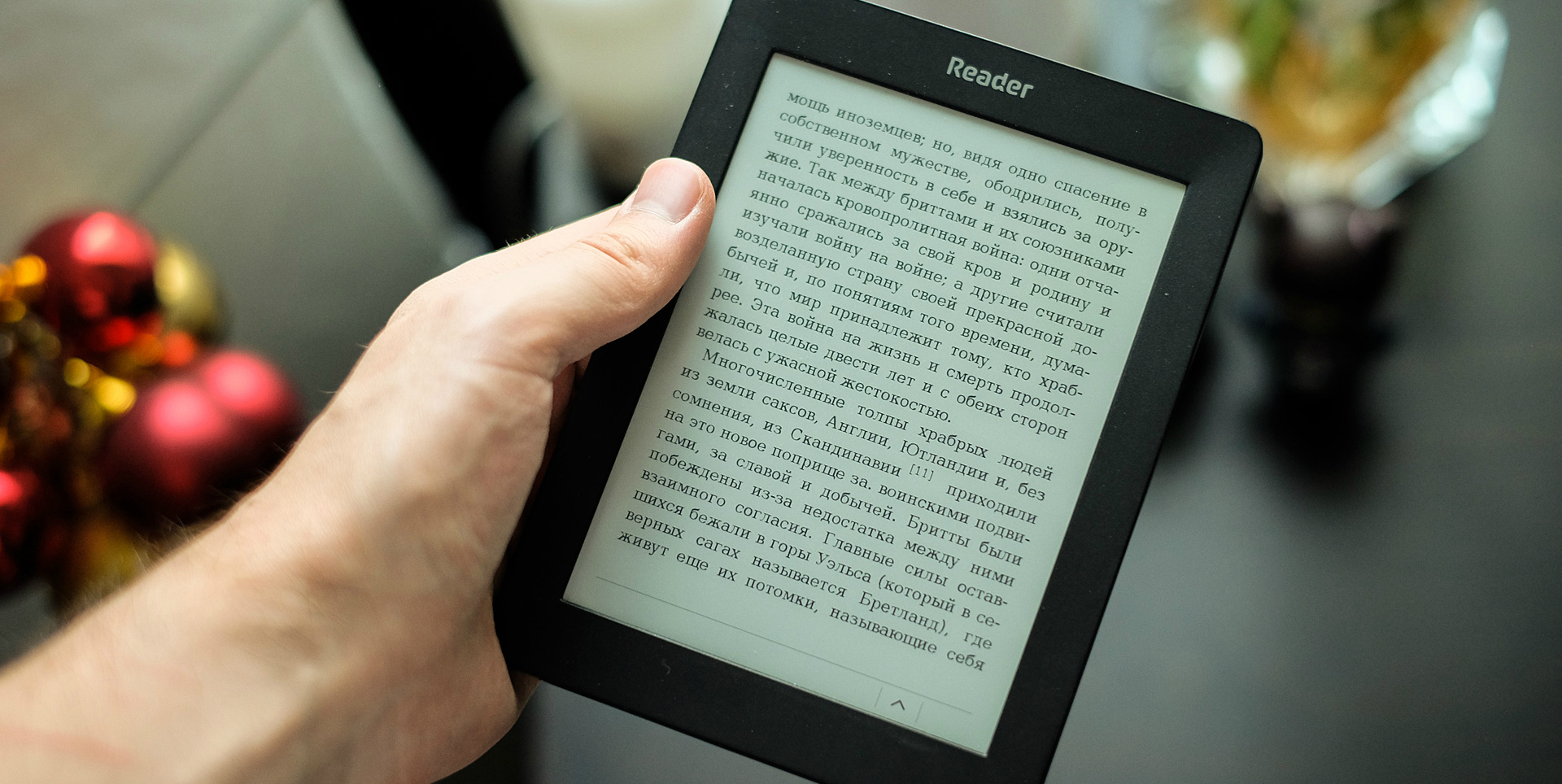 Разработчики электронных книг предлагают на сегодняшний день два варианта управления: сенсорный и кнопочный. Каждый из них имеет свои достоинства и особенности. Также есть третий вариант — комбинированное управление. В этом случае, устройство имеет и сенсор, и кнопки. При выборе следует полагаться на индивидуальные предпочтения. Кому-то удобнее будет пользоваться сенсорным управлением, кому-то кнопочным. Механические кнопки являются более практичными. Их легко заменить, и на их работу не влияет низкая температура, в отличие от сенсорного дисплея, который в холодное время может подвисать.
Разработчики электронных книг предлагают на сегодняшний день два варианта управления: сенсорный и кнопочный. Каждый из них имеет свои достоинства и особенности. Также есть третий вариант — комбинированное управление. В этом случае, устройство имеет и сенсор, и кнопки. При выборе следует полагаться на индивидуальные предпочтения. Кому-то удобнее будет пользоваться сенсорным управлением, кому-то кнопочным. Механические кнопки являются более практичными. Их легко заменить, и на их работу не влияет низкая температура, в отличие от сенсорного дисплея, который в холодное время может подвисать.
Объем памяти
Определиться с объемом памяти электронной книги нетрудно. Минимальные значения этого параметра от 2 до 4 Гб. Если такого объема будет недостаточно, то есть модели, к которым можно подключить внешнее запоминающее устройство. Кроме того, существуют электронные книги с поддержкой карты памяти, что немного увеличивает стоимость устройства. Но даже 2 Гб будет достаточно, если использовать устройство по назначению. То есть для хранения и чтения книг такого объема хватит вполне. Электронные книги с объемом памяти от 8 до 32 Гб дают читателю больше возможностей. Этот вариант подходит, если используется много «тяжелых» файлов, а также для хранения аудиофайлов (имеет смысл, если их воспроизведение поддерживается самой читалкой). При выборе объема памяти следует руководствоваться своими пожеланиями и тем, как планируется использовать девайс: исключительно для чтения книг или дополнительно для просмотра изображений, фильмов, если это букридер с LCD дисплеем.
Габариты и вес букридера
В зависимости от размера, букридеры можно разделить на три вида: компактные, среднеразмерные, полноразмерные. Выбирая размер электронной книги, следует учитывать то, где человек собирается ее использовать. Если в планах носить с собой и читать, например, в общественном транспорте, то лучше выбрать компактную — это вышеупомянутые модели с диагональю 5-6 дюймов. Если читалка приобретается для путешествий, то подойдет средний размер, который также обеспечит комфортное чтение. Если же она будет предназначаться только для домашнего использования — можно смело выбирать большие габариты.
Не будет лишним при выборе читалки учесть ее вес, который колеблется примерно в пределах от 150 до 550 граммов.
Дополнительные возможности
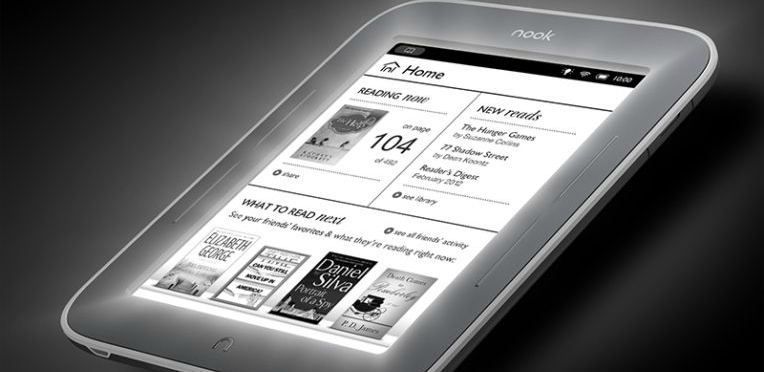 Электронные книги могут иметь дополнительные возможности и функции. Слот для SIM-карты, Wi-Fi модуль или Bluetooth позволят напрямую скачивать литературу или передавать ее на другое устройство. USB разъемы сделают возможным подключение внешнего накопительного диска. LED подсветка повысит комфорт во время чтения при отсутствии освещения и уменьшит нагрузку на зрение. Также есть возможность устанавливать некоторые приложения, если книга работает на платформе Android, что сложно сделать на устройствах работающих на ОС Linux.
Электронные книги могут иметь дополнительные возможности и функции. Слот для SIM-карты, Wi-Fi модуль или Bluetooth позволят напрямую скачивать литературу или передавать ее на другое устройство. USB разъемы сделают возможным подключение внешнего накопительного диска. LED подсветка повысит комфорт во время чтения при отсутствии освещения и уменьшит нагрузку на зрение. Также есть возможность устанавливать некоторые приложения, если книга работает на платформе Android, что сложно сделать на устройствах работающих на ОС Linux.
На эти и другие возможности следует обращать внимание при выборе девайса, поскольку они могут понадобиться в дальнейшем.
Подведем итоги
В целом, если есть необходимость купить устройство, которое подойдет не только для чтения, но и будет включать множество функций перечисленных выше, то внимание следует уделить более дорогостоящим моделям.
Если же букридер нужен только для комфортного чтения, то за небольшую сумму можно выбрать тоже хороший вариант. Оптимально, если это будет легкая и небольшая электронная книга с одним из типов экрана технологии E-Link и батареей емкостью в диапазоне от 600 до 2000 мАч.
С учетом всех указанных рекомендаций и советов, а также личных предпочтений, правильно выбрать устройство для максимально комфортного чтения не составит большого труда.


 4103
4103
